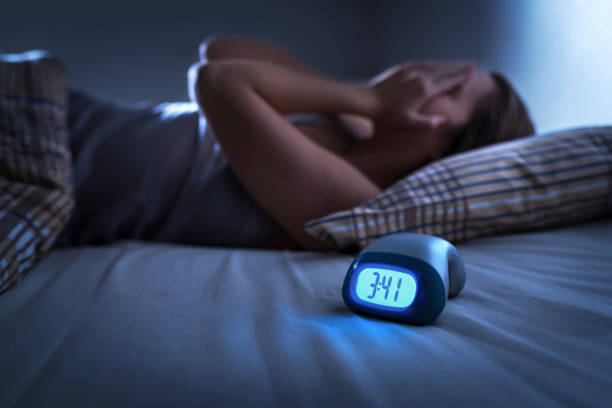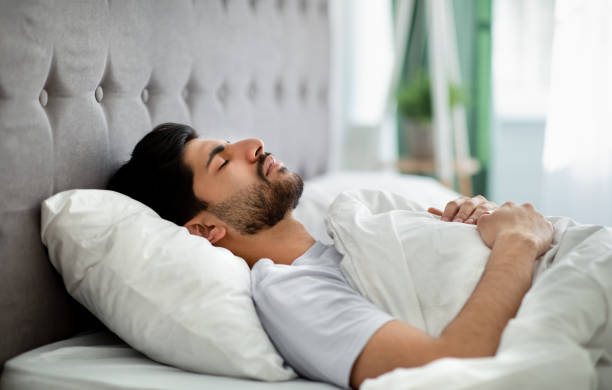Best Sleeping Position For IT Band Pain
The Best Sleeping Positions for Hip and IT Band Pain
If you're suffering from hip pain at night, it may be interrupting your ability to get a good night's sleep. Sleep is extremely important for overall health, so not being able to sleep comfortably due to hip pain is a major problem.
Luckily, there are some simple adjustments you can make to your sleeping position that may help relieve hip and IT band pain so you can sleep better.
Your sleeping position can significantly impact hip discomfort and pain. For example, lying on your side can put pressure on the hip joint and aggravate pain.
Sleeping on your stomach isn’t great for hip pain either since it twists the hip joint into an unnatural position. Finding the right sleep position is crucial for managing hip pain and promoting restful sleep.
In this blog post, we’ll cover the best sleeping positions for alleviating various types of hip pain so you can wake up feeling refreshed and pain-free. We’ll specifically look at recommendations for:
- Side sleeping
- Back sleeping
- Sleeping with a pillow between the knees or legs
- Positions for IT band syndrome and hip injuries
Let’s dive in so you can learn how to sleep to relieve hip pain and get a good night’s rest.

Causes of Hip Pain While Sleeping
Before getting into specific sleeping positions, let’s quickly cover what causes hip pain at night in the first place. Here are some of the most common culprits of hip discomfort while you sleep:
- Sleeping on one side puts more pressure on the hip on that side. This constant pressure through the night strains the hip joint.
- Sleeping on your stomach twists the hip into an unnatural angle, also causing strain.
- Tight hip flexor muscles or other soft tissue tightness can pull on the hip strangely while lying down.
- Arthritis causes pain and inflammation in the hip joint that’s exacerbated while sleeping.
- Injuries like hip bursitis or iliotibial band syndrome trigger hip and outer thigh pain when pressure is applied in certain positions.
- A hip impingement, pinched nerve, or sciatica can also cause sharp hip pain at night.
No matter the cause of your hip pain, sleeping in specific positions can often reduce pressure on the painful area and provide some relief. Let’s look at the best sleeping postures now.
Side Sleeping Position for Hip Pain
Sleeping on your side is often the best sleeping position for hip pain. Lying on your side keeps the hips and spine in a more neutral alignment so there is less pull on the joint compared to being on your stomach or back.

However, there are some variations of side sleeping that are better than others when dealing with hip issues.
Here are tips for side sleeping with hip pain:
- Sleep on the side that is not painful. This eliminates pressure on the sore hip so it can rest and recover. If both hips hurt, switch sides during the night.
- Place a pillow between your legs. Having a pillow between the knees supports the top leg and pelvis so there is less torque on the hip joint. The pillow should go from your inner knees down to your ankles.
- Use a thick pillow under your head to keep your spine straight. Choose a comfort level that keeps your neck aligned with the rest of your spine.
- Consider using a body pillow for even more cushioning support. A full body pillow cradles the weight of the upper leg and takes pressure off the hip.
- Don’t pull your knees up too high in the fetal position as this can strain the hip more. Keep legs at a slight bend.
Back Sleeping Position for Hip Pain
For some types of hip problems, sleeping on your back can be better than side sleeping. The back position keeps the hips fully supported by the mattress in a neutral alignment. This prevents any side-to-side twisting that might occur while on your side.

Back sleeping helps avoid uneven pressure on the hip joint. However, it's important to still use a pillow between the knees while on your back to prevent the legs from externally rotating and pinching the joint. Here are some other tips for back sleeping with hip pain:
- Place a pillow under your knees for support, not just between your knees. This helps maintain the natural curve of your lower spine.
- Use pillows under your arms if needed to prevent your shoulders from slumping inward. Keep good posture.
- Choose a comfortable mattress that conforms to your body shape without sagging too much. Soft mattresses allow the hip to sink in, straining the joint.
- Don’t use more than one pillow under your head or it may flexion your spine too far forward. One thinner pillow is ideal.
- If you have sleep apnea or snore loudly, avoid sleeping on your back as this can aggravate breathing issues for some.
Using a Pillow Between Knees and Legs
Whether you prefer sleeping on your side or back, placing a supportive pillow between your knees or legs is recommended to take pressure off your hips. Here's how it helps:
- Keeps knees and hips properly aligned while lying down. This prevents your top leg from twisting the hip joint unnaturally while on your side.
- Reduces stress on the hip abductors. These muscles on the outer hip have to work harder to stabilize your leg without a pillow.
- Lessens pressure points on the side of the hip and distributes weight more evenly across both hips.
- Allows tense muscles around the hips to fully relax without pulling across the joint.
- Improves spinal alignment. With knees slightly bent and supported, your lower back is in a healthier neutral position.
What kind of pillow should you use between your legs? A firm pillow that won't compress too much works best to properly support knee and hip alignment all night long.
Memory foam or polyfill body pillows mold well to keep your knees, hips and spine in the right position for side or back sleeping.
Sleeping Positions for IT Band Syndrome
The iliotibial band, also called the IT band, is a thick band of tissue that runs down the outside of the hip and thigh connecting the pelvis, knee and lower leg. When this tissue gets tight or inflamed, it causes lateral hip pain called iliotibial band syndrome (ITBS).
IT band pain often flares up while sleeping on the affected side, since pressure on the band causes irritation. These adjustments to your sleeping position can help if you’re dealing with IT band irritation and pain:
- Sleep on the opposite side from the pain. This takes pressure completely off the IT band so it can rest.
- Place a pillow between your knees while on your side, and between your knees and ankles while on your back. This helps reduce stress on the IT band.
- Use a foam roller on the IT band before bed to release tension. Apply cream afterward in the tender spots.
- Try sleeping without a pillow under your head. This can help straighten the spine and pelvis to relax the IT band.
- If pain persists, visit a physical therapist. They can prescribe IT band exercises and stretches to do before bed to ease pain.
Managing Other Sources of Hip Pain
Beyond basic side or back sleeping, you may need to make further adjustments if your hip pain stems from specific injuries or conditions such as:
Greater trochanteric pain syndrome: This causes pain in the outside hip area. Sleep with a pillow between your knees and use a body pillow for cushioning. Avoid sleeping on the sore hip.
Hip bursitis: Inflammation of the hip bursae sacs causes pain on the sides of the hip joint. A pillow between the knees and soft mattress helps reduce pressure.
Arthritis: Joint damage and cartilage loss causes hip arthritis. Use pillows for support and sleep on the side that hurts less. Heat/ice can help reduce inflammation before bed.
Hip replacement: It takes time to adjust to new hip positioning after surgery. Side sleeping with lots of pillows between the legs is usually most comfortable post operation.
Talk to your doctor if your hip pain persists despite trying these different sleep positions. They can provide specialized advice and exercises to relieve your specific type of hip pain.
Other Tips for Sleeping with Hip Pain
Here are some other quick tips beyond sleeping positions to help manage nighttime hip pain:
- Take over-the-counter pain medications before bed if approved by your doctor. They can provide several hours of pain relief for sleep.
- Apply a topical cream with menthol or capsaicin on your hip before bed to reduce pain sensitivity.
- Use hot or cold therapy on the painful hip for 15 minutes before getting in bed to alleviate pain.
- Do gentle hip flexor stretches before bed so these muscles don’t pull on the hip joint overnight.
- Consider using a body pillow or additional pillows for cushioning support around the hips.
- Invest in a new mattress or mattress topper if your current one lacks support and causes pain.
- Sleep in loose, breathable clothing so material doesn’t bunch up and irritate your sore hip as you shift positions.
FAQ
The Takeaway: Choose the Best Sleeping Position for Your Hip Pain
Experiencing hip pain at night doesn’t mean you’re destined for poor sleep. Small tweaks to your sleeping position like side sleeping with a pillow between your knees can make a huge difference in relieving hip discomfort. This allows you to finally get the restful sleep your body needs.
Pay attention to which sleeping positions alleviate or aggravate your hip pain. Everyone’s body is slightly different. Experiment with side and back sleeping positions, pillow configurations, and mattress adjustments to discover your ideal setup for sleeping with hip pain.
While your doctor can provide guidance, you’ll have to dial in the perfect sleeping position for you through trial and error. But once you find that sweet spot, you’ll be snoozing pain-free and waking up refreshed and ready to take on the day.
What causes hip pain while sleeping?
Sleeping on one side can put more pressure on that hip joint and strain it overnight. Sleeping on your stomach twists the hips into an unnatural position that can also cause pain. Tight muscles or injuries like bursitis can flare up symptoms in certain positions too.
Should I sleep on my side if I have hip pain?
Sleeping on your side is often best for hip pain as it keeps the hips in better alignment. Make sure to put a pillow between your knees and sleep on your less painful side. Use pillows to support your head/neck properly too. Don’t pull knees up too high.
Why does my hip hurt more at night?
Lying in one position for hours can make hip pain worse at night. Gravity isn’t compressing the joint during the day which can also reduce symptoms until you lie down. Try switching positions, using pillows for support, and stretching before bed.
What’s the best sleeping position for IT band pain?
It’s best to sleep on the side opposite from your IT band pain. This removes pressure so the inflamed tissue can rest. Use a pillow between your knees and try a foam roller on your IT band before bed to release tension.
How can I relieve hip pain while sleeping?
Try sleeping on the side that isn’t painful and using pillows for support between your knees, legs, arms, and neck. Apply a pain relief cream before bed and try heat/ice therapy too. Take medication if needed. Do gentle stretches before bed as well.
How do you prevent hip pain at night?
Use pillows for support between your knees and legs while side or back sleeping. Sleep on the side that isn’t painful. Don’t pull your knees up high. Do hip flexor stretches before bed. Use a heating pad or ice therapy before getting in bed too.
Should you sleep on your back with hip pain?
Sleeping on your back can relieve hip pain as it keeps the hips fully supported and aligned. Use a pillow under your knees for support and keep your spine straight. Avoid too soft mattresses that allow your hips to sink in.
What causes hip pain when sleeping on your stomach?
Sleeping on your stomach isn’t good for hip issues as it twists the hips into an unnatural, strained position all night long. It also arches the back excessively. Try side or back sleeping instead with pillows for support.
How do tight hip muscles cause pain at night?
When hip flexors and other soft tissues around the hip joints get very tight, they can pull uncomfortably on the joint in certain positions during sleep. Stretching before bed helps relax these muscles.
Does sleeping on your side help hip pain?
Sleeping on the less painful side takes pressure off the sore hip so it can rest and recover. Using pillows between the knees and legs also minimizes torque on the hip joint during side sleeping. Avoid pulling knees too high up.
How to manage sacroiliac joint pain at night?
Sleep with a pillow between your knees while on your back or side to support the sacroiliac joint. Use a body pillow for cushioning too. Try alternating between sleeping on your left and right side during the night as well.

